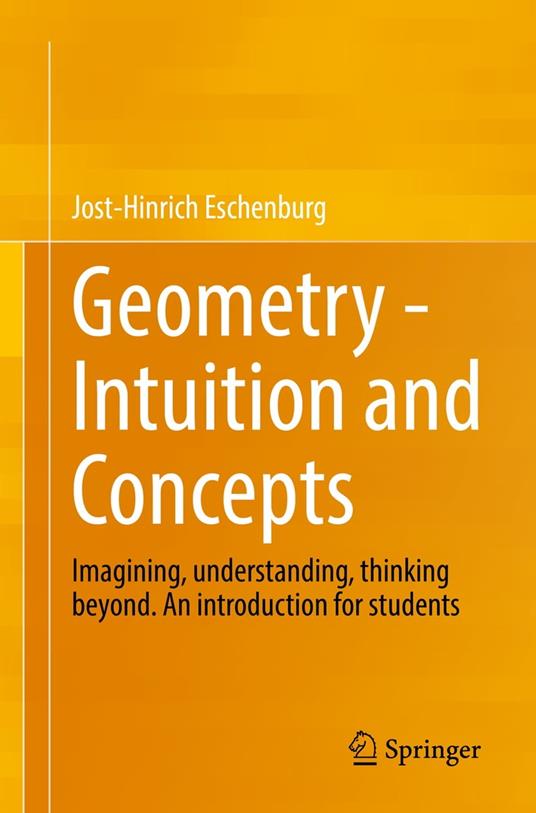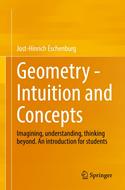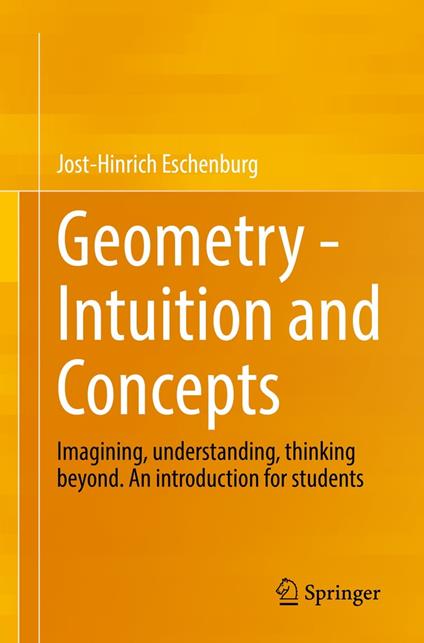Geometry - Intuition and Concepts
This book deals with the geometry of visual space in all its aspects. As in any branch of mathematics, the aim is to trace the hidden to the obvious; the peculiarity of geometry is that the obvious is sometimes literally before one's eyes. Starting from intuition, spatial concepts are embedded in the pre-existing mathematical framework of linear algebra and calculus. The path from visualization to mathematically exact language is itself the learning content of this book. This is intended to close an often lamented gap in understanding between descriptive preschool and school geometry and the abstract concepts of linear algebra and calculus. At the same time, descriptive geometric modes of argumentation are justified because their embedding in the strict mathematical language has been clarified. The concepts of geometry are of a very different nature; they denote, so to speak, different layers of geometric thinking: some arguments use only concepts such as point, straight line, and incidence, others require angles and distances, still others symmetry considerations. Each of these conceptual fields determines a separate subfield of geometry and a separate chapter of this book, with the exception of the last-mentioned conceptual field "symmetry", which runs through all the others: - Incidence: Projective geometry - Parallelism: Affine geometry - Angle: Conformal Geometry - Distance: Metric Geometry - Curvature: Differential Geometry - Angle as distance measure: Spherical and Hyperbolic Geometry - Symmetry: Mapping Geometry. The mathematical experience acquired in the visual space can be easily transferred to much more abstract situations with the help of the vector space notion. The generalizations beyond the visual dimension point in two directions: Extension of the number concept and transcending the three illustrative dimensions. This book is a translation of the original German 1st edition Geometrie – Anschauung und Begriffe by Jost-Hinrich Eschenburg, published by Springer Fachmedien Wiesbaden GmbH, part of Springer Nature in 2020. The translation was done with the help of artificial intelligence (machine translation by the service DeepL.com). A subsequent human revision was done primarily in terms of content, so that the book will read stylistically differently from a conventional translation. Springer Nature works continuously to further the development of tools for the production of books and on the related technologies to support the authors.
-
Autore:
-
Anno edizione:2022
-
Editore:
-
Formato:
-
Lingua:Inglese
Formato:
Gli eBook venduti da Feltrinelli.it sono in formato ePub e possono essere protetti da Adobe DRM. In caso di download di un file protetto da DRM si otterrà un file in formato .acs, (Adobe Content Server Message), che dovrà essere aperto tramite Adobe Digital Editions e autorizzato tramite un account Adobe, prima di poter essere letto su pc o trasferito su dispositivi compatibili.
Cloud:
Gli eBook venduti da Feltrinelli.it sono sincronizzati automaticamente su tutti i client di lettura Kobo successivamente all’acquisto. Grazie al Cloud Kobo i progressi di lettura, le note, le evidenziazioni vengono salvati e sincronizzati automaticamente su tutti i dispositivi e le APP di lettura Kobo utilizzati per la lettura.
Clicca qui per sapere come scaricare gli ebook utilizzando un pc con sistema operativo Windows



